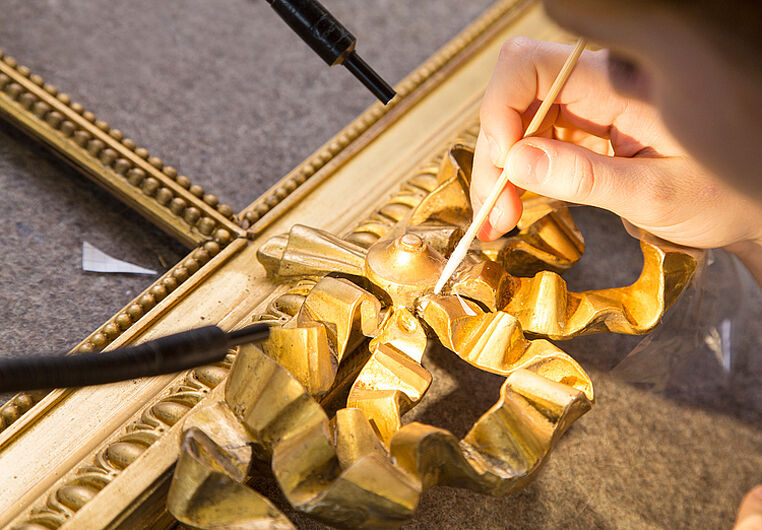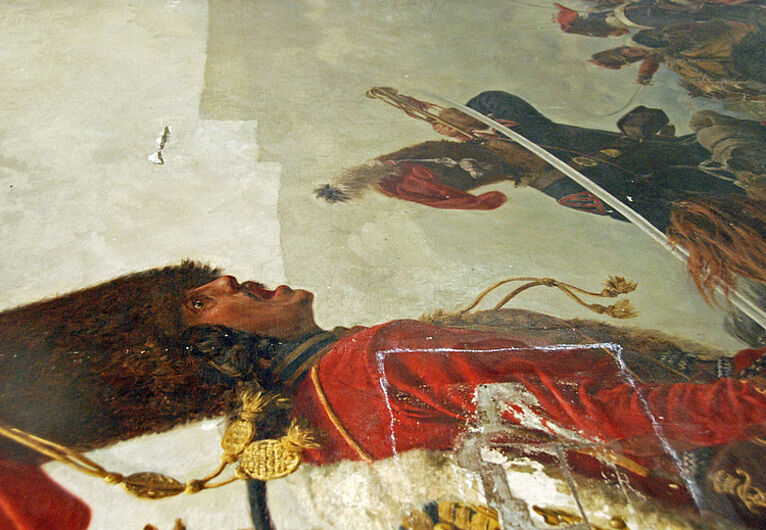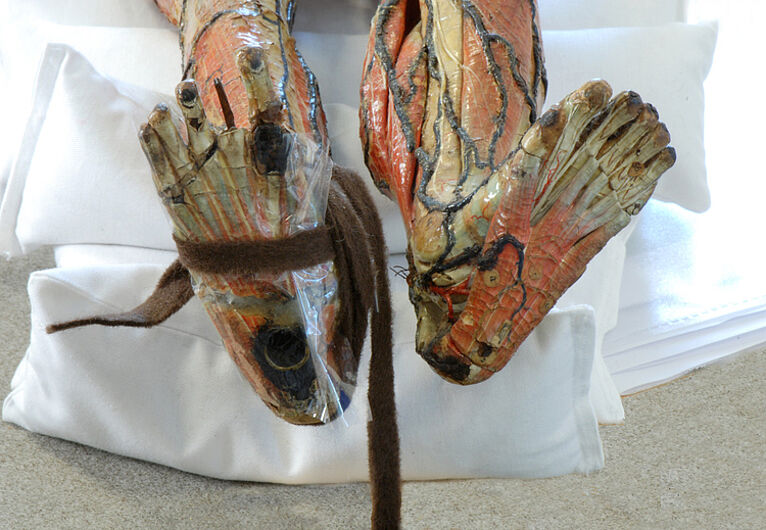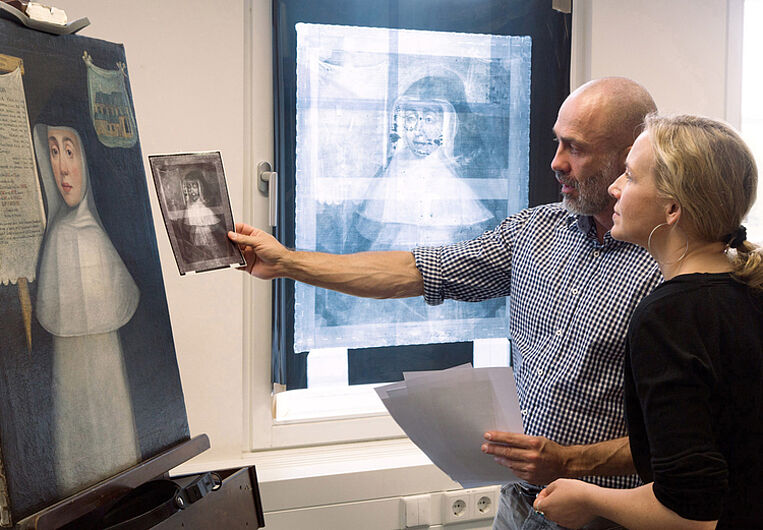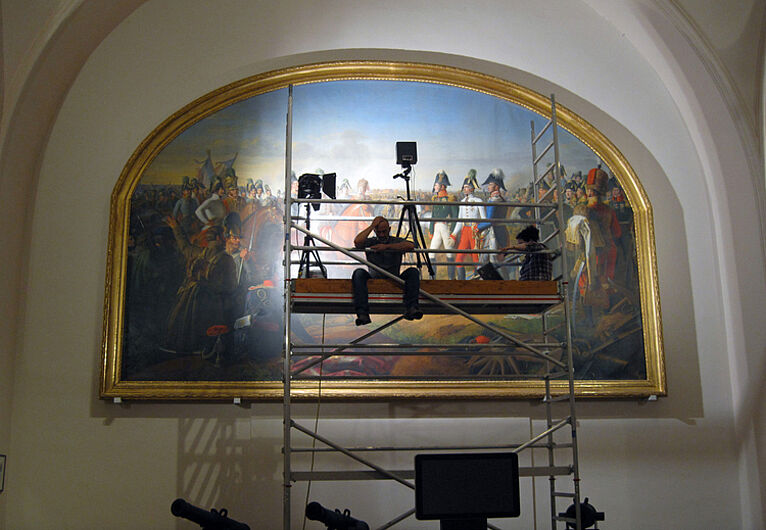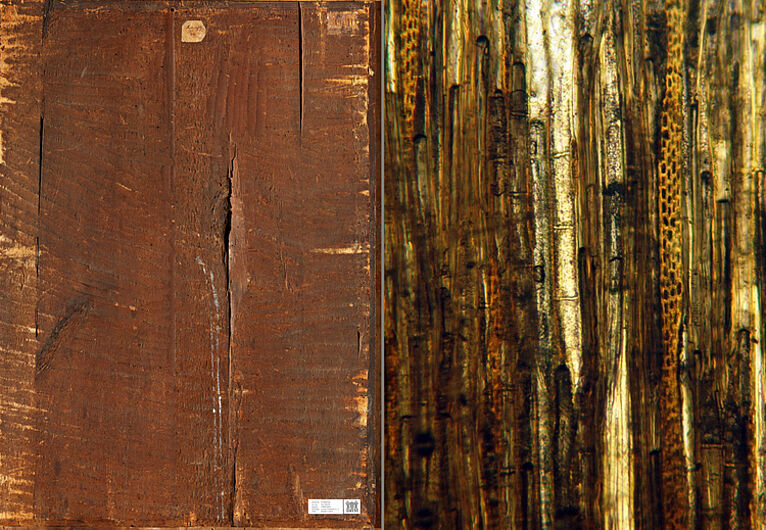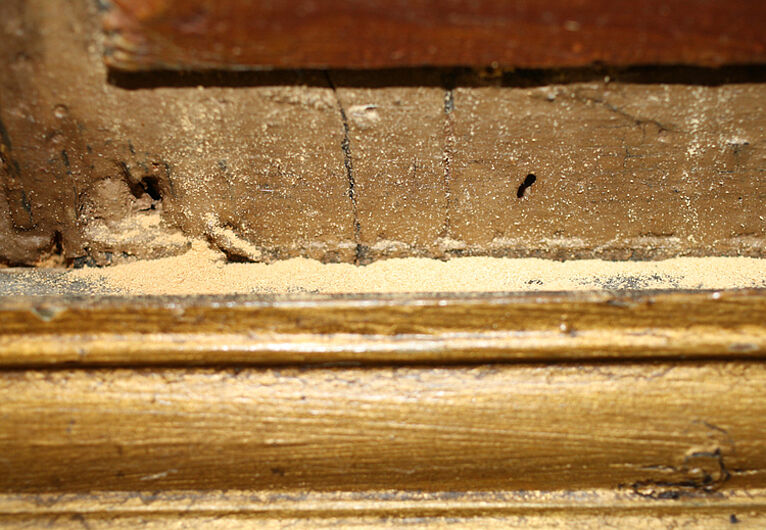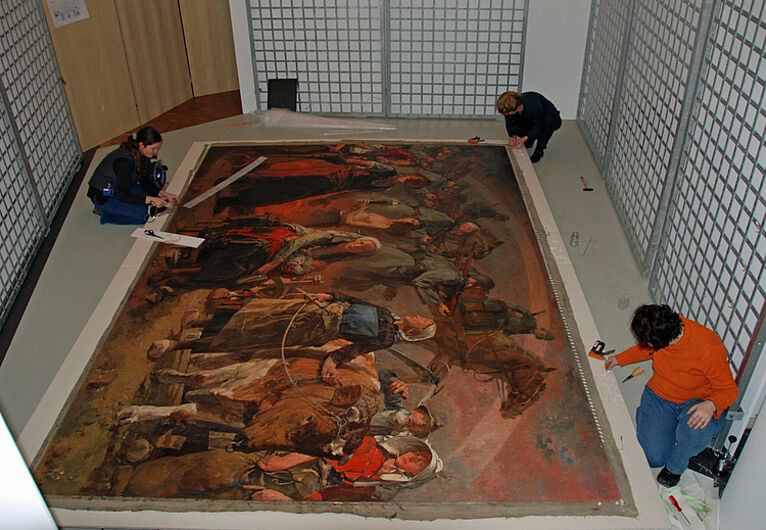Painting Conservation

The paintings collection in the DHM comprises works from the 14th to the 21st centuries. The collection is expanding to the present day through purchases. Most examinations of these paintings are undertaken without detailed prior knowledge about them. Important aspects of the examinations include the assessment of the painting technique, the condition, and the treatment history. The latter is seldom known.
Traditionally towards the end of the Middle Ages paintings were on unprimed cloths followed by paintings on primed wooden panels and later on primed textile canvases. Materials like metal, parchment, ivory, paper, or cardboard were less often used for paintings.
The ageing of paint and varnish has a significant impact on the readability of a painting. Thereby an aged painting, even after conservation or restoration, can never be brought back to its original condition. This dichotomy pushes forward the decision of what will be conserved or restored on a painting.
In 2002 a large inventory of paintings in possession of the federal state were transferred to the DHM, the so-called “German War Art Collection” which was formerly in the possession of the Reich Chancellery and with that, of Adolf Hitler. This collection has not been seen publicly for a long time. Provisions need to be taken when dealing with these historically burdened objects. They provoke specific debates that are more clearly posed than usual regarding the question to which degree purely conservatorial or aesthetic measures are to be undertaken.
The conservators in the painting conservation department in the DHM also conserve and restore the small stock of decorated wooden sculptures – those that are carved, primed, and then painted.


